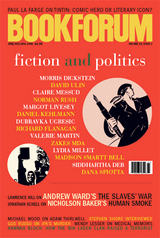
Debbie Drechsler’s semiautobiographical Daddy’s Girl first ran as a series of strips in the New York Press in the early 90s. Published in book form in 1995, the graphic novel was nominated for an Ignatz Award but was sold only in comic-book stores and fell out of print. Its reissue in hardcover speaks to the lasting quality of the material and should act as a reminder that, despite the large number of similar memoirs and graphic novels published in recent years, the original strip was groundbreaking in its frank depiction of sexual abuse.
That Daddy’s Girl is a troubling read is evident from the second page, in which a young girl is forced to perform a sex act on her father while her sister sleeps (or doesn’t) nearby. The book draws on Drechsler’s own early experiences to unsettling effect, informing the frightened childhood and troubled adolescence of a girl named Lily. Haunted by her father’s abuse and locked in a combative relationship with her mother, Lily attempts to navigate school, a move to a new town, boyfriends, and friendship, never quite sure of herself and her place in the world. An unconnected story, “Sixteen,” is also included in the book. The tale features Franny, a teenager with a budding literary talent that leads indirectly to friendship with a trio of stoners and their drug dealer, and from there to personal disaster.
Drechsler’s drawings combine childlike shapes with heavy, curved lines and crosshatching. Lynda Barry’s influence is evident in the lines and compositions, especially in the bittersweet “Constellations,” the one story rendered in color. Elsewhere, the stark black-and-white, woodblock-style forms are reminiscent of Julie Doucet’s bold, exaggerated line work. Drechsler’s expressionist style both enhances and contrasts with her characters’ attempts to cling to innocence and identity in the face of personal horror.
Daddy’s Girl can be unrelentingly bleak, with Lily’s abuse and near-crippling self-doubt constantly reinforced by her mother’s coldness. The harrowing assault Franny endures leaves her without even the diversion that her poetry originally offered. There is little lightness or humor to be had in these situations, and the book might be completely overwhelming if not for its moments of grace: Lily’s friend Claudia taking her to see deer and eat wild strawberries, the girls tickling Lily’s sisters in mock punishment for eavesdropping, and the closing four-panel vignette, “Friends in the Night,” in which a girl finds a retreat in the distant sounds of a shortwave radio, “trying to find the very farthest station I can pick up . . . and pretending I’m there instead of here.”
The thirteen years since Daddy’s Girl was first collected have seen a deluge of memoirs and semiautobiographical fiction with no shortage of shocking and distressing material. Kathryn Harrison’s The Kiss (1998) comes to mind, as does Phoebe Gloeckner’s Diary of a Teenage Girl (2002). Drechsler’s work stands alongside these books on its own merits; that Daddy’s Girl was written and drawn at all makes explicit the possibility of escape implicit in Lily’s artistic talent and the art prize that she wins: “I guess I’ll never be a very good person but at least I might become a great artist . . . so, then my life won’t be a complete waste, right?”
